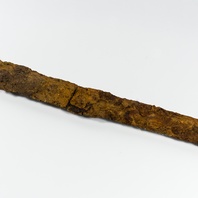
Viking Objects
Sword (1989-59/7113)
This Viking Age sword was found in Grave 511 at Repton where the invading Viking Great Army had their winter camp in 873/4. When it was found, the sword had traces of a wooden scabbard attached to the rusted blade. Analysis showed that the scabbard was lined with fleece and covered in leather. The grip was wooden and covered in a woollen textile.
Read More
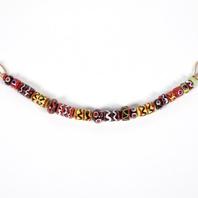
Viking Objects
Reproduction Baltic Glass Beads
This glass-bead set is based on originals from Ribe/Hedeby and the Baltic and were meant to be worn between oval brooches. Glass beads were a coveted item with some being imported from as far away as the Middle East. They were manufactured by specialised artisans who would heat various coloured glass rods over a furnace and melt the glass onto a metal stick to form different shaped beads.
Read More
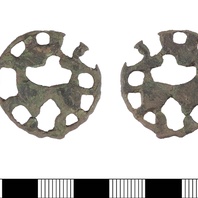
Viking Objects
Urnes-Style Mount (LIN-FA6943)
This copper-alloy mount features Urnes-style openwork decoration.
Read More
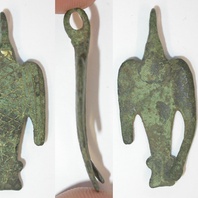
Viking Objects
Bird Pendant (DENO-55AE35)
A pendant of similar shape although with different decoration is dated to the second half of the ninth century from Yaroslavl, Russia. The bird symbol, very similar to the one depicted on this pendant, was used by the Rurik dynasty which had started the conquest of Slavic lands in the mid-ninth century and later formed the polity of Rus’. With some exceptions, pendants were generally worn by women as an accessory to Scandinavian dress.
Read More
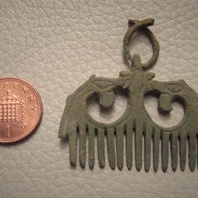
Viking Objects
Comb Pendant (NARC-B3E1B5)
This pendant is unusual for the British isles and has Eastern Scandinavian or Baltic origin. The pendant is decorated with Ringerike-style zoomorphic openwork ornament with a pair of inturning zoomorphic heads. Pendants were a popular dress accessory in Norway and Sweden and sometimes were worn with beads between a pair of oval brooches. In England, pendants did not have the same popularity and there do not seem to be any contemporary Anglo-Saxon pendants.
Read More
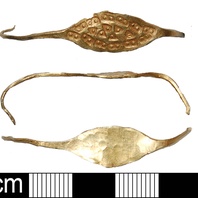
Viking Objects
Gold Finger-Ring (BH-59ECD3)
An Anglo-Scandinavian gold finger-ring decorated with a punched a lozenge-shaped pattern of six triangles with central dots, surrounded by a circumferential band of punched rectangles with two dots. The ends of the wires are hooked, showing that they would originally have been twisted together. Rings like this with knotted ends are typically Scandinavian.
Read More
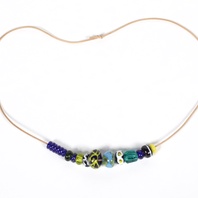
Viking Objects
Reproduction York Glass Beads
This necklace with glass beads is based on originals from York. Glass beads were a coveted item with some being imported from as far away as the Middle East. They were manufactured by specialised artisans who would heat various coloured glass rods over a furnace and melt the glass onto a metal stick to form different shaped beads.
Read More
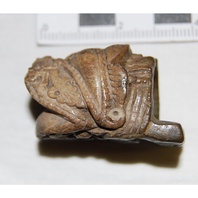
Viking Objects
Dragon’s Head Mount (L.A67.1864.1.0)
This mount from Leicester is in the form of a dragon’s head and is thought to be Scandinavian work. The base of the head is extended, slotted and necked as though for a hinge. There are green stains suggesting that it was attached to an item of copper or bronze. Mounts were generally used to decorate various items such as belts or pouches. In this case, it may have been a fitting for a knife. Mounts were usually attached to items by hammering over the metal studs on the back of the mount.
Read More
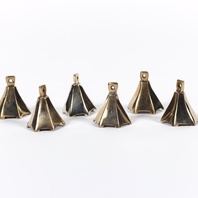
Viking Objects
Reproduction Norse Bells
Bells of this type are described as a ‘Norse’ bell because of their association with Scandinavian sites though not much else is known about their purpose or origin. However, it seems likely that they were used as harness decorations.
Read More
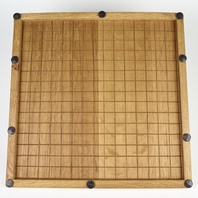
Viking Objects
Reproduction Game Board
A reproduction oak game board based on one from Coppergate, York. This is a larger-than-usual hnefatafl board with no significant squares marked out. Gaming pieces have been laid out on it in some of the photographs, but it is likely that a board this size would require more pieces on the outer edges (the attackers).
Read More
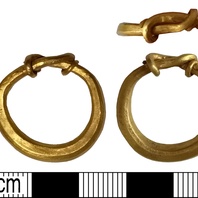
Viking Objects
Gold Finger Ring (DENO-F22E58)
This gold finger ring is made of a curved rod with a rectangular cross-section and bevelled edges. Rings like this with knotted ends are typically Scandinavian. Some examples of plain rings like this one were strung on bracelets in Scandinavia.
